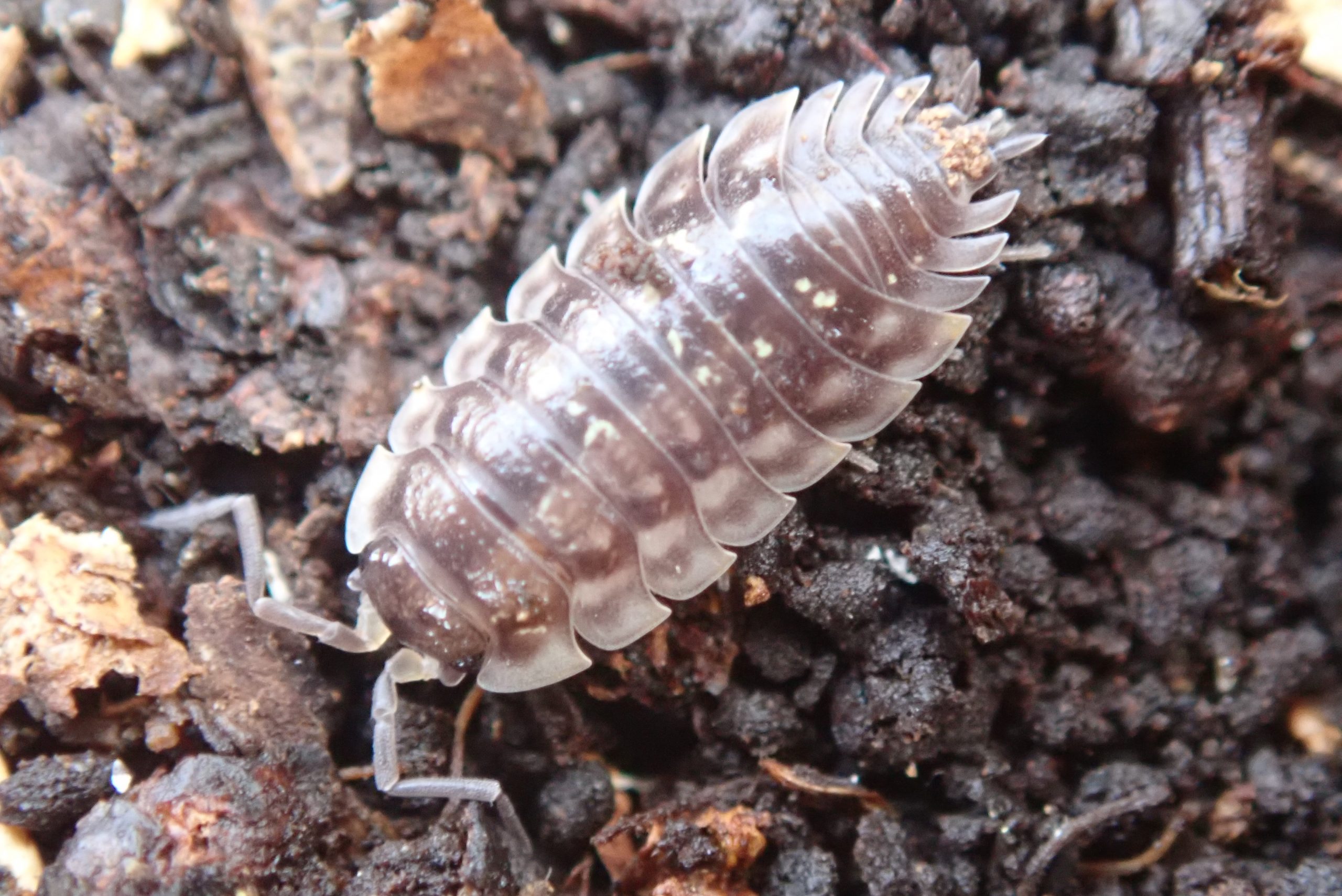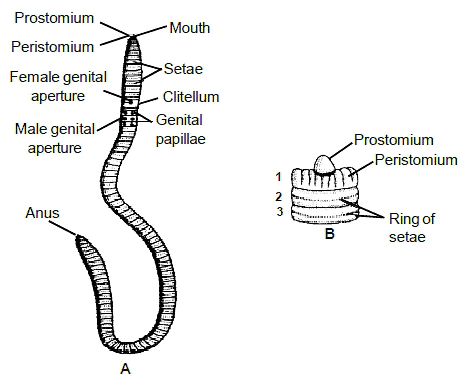Soil: Flora and Fauna
Soil supports a wide array of organisms of different body sizes and taxonomic groups. Generally, soil organisms are classified into three major groups namely microfauna and microflora, mesofauna, and macrofauna.
Mesoflora and macroflora because occur above the surface of the soil (land-surface), therefore, are excluded from this article.
1. Microfauna
- It includes organisms with body sizes within the range of 20μm to 200μm. It includes all Protozoa and small-sized mites, nematodes, rotifers, tardigrades, and copepods Crustacea.
- Soil inhabiting protozoans such as amoeba, ciliates, zoomastigina flagellates occur near the surface soils, while the testate forms such as Thecamoeba, Euglypha, and Difflugia, have a wider vertical distribution.
- The common terrestrial polyclad is Bipalium. The nematodes such as Rhabditis, Diplogaster, Tylenchus, Heterodera, Aphelenchoides, Mononchus, Pratylenchus, Xiphinema, and Criconemoides, abound by as much as 1-3 million in raw humus soils to 20 million/m2 in grassland soils.
2. Microflora
- The microflora of soil includes bacteria, soil fungi, soil actinomycetes, blue-green algae, and algae. In soil, microflora bacteria form about 90 percent of the total population. Fungi and algae together represent one percent and actinomycetes cover only 9 percent.
- Soil bacteria grow fairly well in neutral soils richly supplied with organic nutrients. Soil inhabitant bacteria fall into categories namely-autotrophic bacteria and heterotrophic bacteria.
- Autotrophic bacteria derive their energy from the oxidation of simple carbon compounds or from inorganic substances and their carbon from atmospheric CO2.
- The common autotrophic bacteria of soil are nitrifying bacteria, hydrogen bacteria, sulfur bacteria, iron bacteria, manganese bacteria, carbon monoxide bacteria, and methane bacteria.
- Most soil bacteria are heterotrophic bacteria depending upon the organic matter of soil for their energy source and are primarily concerned with the decomposition of cellulose, and other carbohydrates, proteins, fats, and waxes.
- They bring about the mineralization of organic matter in soil and release a considerable amount of nitrogen, phosphorus, and other nutrients for plants. The common nitrogen-fixing bacteria of soil are Rhizobium(which occurs in root nodules of leguminous plants); Azotobacter and Clostridium pasteurianum (the latter two are free occurring in soil).
- The majority of soil fungi are found in acidic soils. They may be parasitic, saprophytic and symbiotic.
- Parasitic fungi of soil infect the roots of plants and cause plant diseases such as cotton root rot and many kinds of wilts, rusts, blights, and smuts. Certain wilt-forming fungi produce toxins that are harmful, for example, Fusarium lini, which causes wilt of fla (Alsi) and secretes HCN, and Fusarium udum, a fungus causing wilt of pigeon pea (Arhar) secretes fusaric acid in the roots of host plants. However, certain parasitic fungi produce growth stimulating substances for the host plant.
- Fusarium sp., for example, has been found to secrete gibberellin and gibberellic acid (C19H22O6).
- Symbiotic fungi of soil live on the roots of certain plants and both fungi and plants are benefited. Saprophytic fungi depend on the dead organic matter of soil and derive the energy from the decomposition of the latter. They break down cellulose, lignin, gum, sugars, starch, protein, etc., into simple gradients to be utilized by higher plants as nutrients.
- Actinomycete fungi prefer saline soils and bring about the decomposition of organic matter such as cellulose. They produce a variety of antibiotics of great economic significance for man.
- The most important blue-green algae of soil are those that fix nitrogen in the soil. Anabaena, Nostoc, and Microcystis are important nitrogen-fixing blue-green algae of soil. They also, make soil aggregates because of having mucilage.
3. Mesofauna
- Mesofauna includes animals with body sizes within the range of 200μm to 1 cm. The micro-arthropods and Acari (mites) and Collembola (spring tails) are important members of this group which also include the larger nematodes, rotifers, and tardigrades, together with most of the isopods, Arachnida (spiders), Chelognathi (pseudoscorpions), Opiliones (harvestmen),
- Enchytraeidae (pot-worms), insect larvae and small millipedes (Diplopoda), isopods, and mollusks.
- Among annelids, the microscopic enchytraeids are represented by Enchytraeus fredericia and Achaeta lumbricellus, which are more abundant in organic soils and forests than in grassland.
- Oniscus, Porcellio, and Armadillidum are the most common isopods (crustaceans) of the tropics in the humid zone.
- Among the soil arachnids, mites are the most predominant. Mites flourish in moist organic soils and certain mites such as Galumna, Cepheus, and Hemorobates occur in lichens and mosses.
- Certain mites, such as Schelorbates and Brachychthornus live in humus. The mites are saprophagous, predatory, and phytophagous and are involved in the process of organic decomposition and its resultant processes.
- Certain arachnids such as scorpions, Thelyphonus, Galeodes; and some spiders are crepuscular, hiding under rocks or in crevices in soil and in the loose litter, and have no ecological significance in decomposition like other arachnids.
- Many Opiliones or harvestmen occur in forest litter, frequently preying upon soil organisms. Besides mites, only the pseudoscorpions or chaetognath occur in surface soils and most decaying vegetations.
- Of the neutrophil litter inhabitants are Stenatemnus indicus, Dhanus indicus, Fealla indica and the hygrophilous inhabitants living in the litter and under stones are–Comsaditha indica, Tyrannochthonius madrasensis, Tyrannochithonius chelatus and Hygrochelifer indicus (Murthy, 1964), feeding on Collembola, enchytraeids, etc.
- The common millipedes or Diplopoda of forest soil which are chief decomposers of soils are Spirostreptus, Thyropygus, Glomeris, Arthrosphaera, and Polydesmus, Iulis, etc.
- Tardigrades or bear animalcules occur in the surface layer of most soils in grassland being represented by the Macrobiotus and Hypsibius.
- Among insects, apterygote Collembola forms numerically the most important group of soil insects. Other insects such as Dermaptera, Psocoptera, Dictyoptera, Isoptera, Coleoptera, a few Hymenoptera, and some Diptera also occur in soil, sometimes as juveniles.
- The termites such as Reticulotermes and Odontotermes are important soil-dwellers of the tropics and play an important role in the break up of organic materials and their mining up with mineral soils. Among the Hymenoptera, ants are the most important soil dwelling forms. Among Collembola, Onchuridae, Isotomidae, Poduridae, and Entomobrydae are richly represented in the soil both in number and species composition.
- Large-sized Collumbola such as Tomo-cereus, Entomobrya, and Orchesella occur in the surface layer, while the smaller Onychurus, Tullbergia, etc., occur in deeper layers of soils.
- Among Diplura, Anajapy, Japy, and Campodeaare often found in small numbers in moist soils under stones and in humus. Proturans are more abundant than Diplura and very common in moist forest and grassland soils which abound in species of Eosentomon, Acerentomon, and Acerentulus.

4. Macrofauna
- Macrofauna of soil includes those animals whose body size is greater than 1 cm. Here belong the majority of Lumbricidae, the Mollusca, the largest insects and arachnids, and the soil-dwelling vertebrates.
- Earthworms usually occur in abundance in alkaline and moist soils and sparse in acid soils. They have been proverbial for their influence on the process of decomposition of organic materials, breaking up litter fragments and mixing them thoroughly with mineral soils resulting in the formation of organic soils.
- Some of the common Indian annelidan species of soil are Megascole, Pheretima, Octochaetus, Dravida, and Moniligaster. Among chilopods, the carnivorous Scolopendra and Lithobius are common in moist soils feeding on leaf litter inhabitants.
- Among soil vertebrates, the following animals are well adapted for burrowing life in soils– Ichthyophis, Cacopus systema, Breviceps (Amphibia), Sphenodon, Uromasti, limbless lizards, and snakes (Reptilia), Talpa, Dasyurus, Notoryctes and various insectivores and rodents (Mammalia).

- Adaptations of soil animals. Animals that are adapted for digging the burrows and for a subterranean mode of life are called fossorial animals. These animals may dig either for their food or simply for retreat. Zoologically they are primitive, defenseless, and unambitious animals. They have the following adaptations :
- The body contour is either cylindrical (e.g., Ichthyophis, limbless lizards, snakes, earthworms, Scolopendra, etc.), or spindle-shaped or fusiform (e.g., Talpa, Echidna, etc.), so as to offer the least resistance to subterranean passage.
- The head tapers anteriorly to form a sort of snout for burrowing.
- The tail is short or vestigial.
- The eyes tend to become vestigial as they are of no use in dark habitat.
- The eternal ears also tend to disappear since they would be obstructing burrowing.
- For digging, many structures may be found in different fossorial animals, e.g., hands are well adapted for digging. In the insect Gryllotalpa, the forelegs are modified for digging purposes.
- The ground-dwelling animals may be cursorial (running), such as ostrich, rhea, ungulates, wolves, cats, bears, hyaenas, etc., saltatory (jumping) such as rodents, rabbits, wallabies, kangaroos, etc., or graviportal (heavy) such as turtles, armadillos, elephants, hippopotami, etc., exhibit different kinds of adaptations for different kinds of soils. For example, if the soil is firm and hard, the large animals inhabiting the ecosystem tend to have small hooves or paws; if the soil is wet and spongy, they tend to have broad hooves or paws.
References:
- https://www.sciencedirect.com/topics/agricultural-and-biological-sciences/soil-fauna
- https://naldc.nal.usda.gov/download/IND43893638/PDF